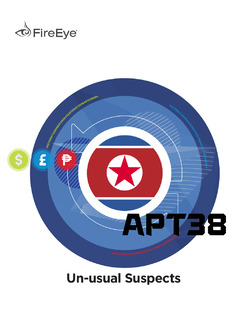FireEye pays special attention to advanced persistent threats (APT) groups that receive direction and support from an established nation state.
Like other attackers, APT groups try to steal data, disrupt operations or destroy infrastructure. Unlike most cyber criminals, APT attackers pursue their objectives over months or years. They adapt to cyber defenses and frequently retarget the same victim.
Suspected attribution: North Korea
Target sectors: Financial institutions world-wide
Overview: FireEye analysis of the North Korean regime-backed threat group which is being called APT38 reveals that they are responsible for conducting the largest observed cyber heists. Although APT38 shares malware development resources and North Korean state sponsorship with a group referred to by the security community as “Lazarus”, we believe that APT38’s financial motivation, unique toolset, and tactics, techniques, and procedures (TTPs) are distinct enough for them to be tracked separately from other North Korean cyber activity.
Associated malware: This large and prolific group uses a variety of custom malware families, including backdoors, tunnelers, dataminers, and destructive malware to steal millions of dollars from financial institutions and render victim networks inoperable.
Attack vectors: APT38 has conducted operations in over 16 organizations in at least 11 countries. This group is careful, calculated, and has demonstrated a desire to maintain access to victim environments for as long as necessary to understand the network layout, required permissions, and system technologies to achieve its goals. APT38 is unique in that they are not afraid to aggressively destroy evidence or victim networks as part of their operations.

